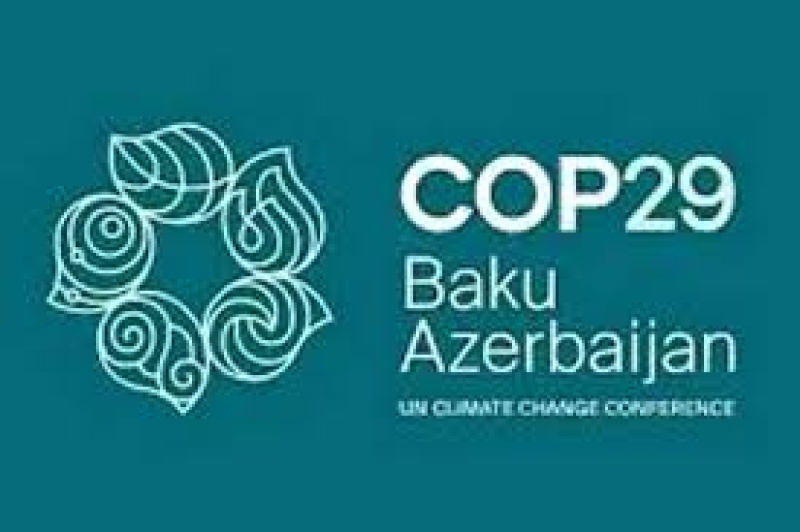- Hadi is no more, state mourning on Saturday: CA |
- Bangladesh capital market falls; weekly turnover lowest |
- Sharif Osman Hadi No More |
- Tarique Rahman to Return Home With Daughter on Dec 25 |
- ILO praises Bangladesh’s labour reforms, new milestones |
New Climate Finance Target Expected as COP29 End

As COP29 discussions intensify, Friday may mark the announcement of a new global climate finance target, with critical decisions expected to be made in the final days of the conference.
Ziaul Haque, a member of Bangladesh's delegation and Director (Air Management) at the Department of Environment, told UNB, “Final discussions will take place today and tomorrow. However, we anticipate that the conference may extend for another day. The primary objective of COP29 is to establish a target for global climate finance, and we hope a decision will be made soon.”
He elaborated on the current financial gap, referencing the 2015 commitment for developed countries to collectively raise $100 billion annually by 2020, amounting to $600 billion from 2020 to 2025. “However, these funds have not yet been fully delivered. We are hopeful that COP29 will finalize the funding target,” he said.
Discussions are ongoing about the level of funding developed nations will provide after 2025. Haque noted that proposals range from $300 billion to $1 trillion, but he suggested that the target could be around $500-600 billion, though no consensus has been reached. He also stressed the importance of the quality of these funds, emphasizing the need for grants rather than loans. “If loans are included, they should be concessional, not commercial,” he added.
Focus on Mitigation and Adaptation
Prominent climate expert, Emeritus Professor Dr. Ainun Nishat, underscored the importance of two key areas: mitigation and adaptation. Speaking to UNB, he said, “COP29 is centered on two critical issues. First, mitigation efforts must be prioritized to limit global temperature rise to 1.5°C by 2030 and 2°C by 2050.”
“Second, adaptation measures are crucial, especially as Bangladesh faces increasing floods, cyclones, and droughts. We are one of the most affected nations,” he added.
Regarding climate finance, Dr. Nishat stressed the need for an updated global target and noted that discussions are focused on whether wealthy nations will increase their funding for developing countries, particularly for the ‘Loss and Damage Fund.’
Bangladesh’s Financial Needs
Syeda Rizwana Hasan, adviser to the Ministry of Environment, Forests, and Climate Change, emphasized Bangladesh’s pressing financial requirements. “Bangladesh needs $8.5 billion annually for adaptation efforts, but only $3 billion is available domestically, leaving a $5.5 billion shortfall that must be filled through external grants,” she explained.
“To keep global warming within 1.5°C, we must close the carbon emissions gap. This means reducing global greenhouse gas emissions by 43% by 2030, compared to 2019 levels, and by 60% by 2035. By 2050, emissions must reach net zero,” she added.
Rizwana also highlighted the importance of financial and technical support for Least Developed Countries (LDCs). “The Mitigation Work Programme must ensure sufficient resources to implement LDCs’ Nationally Determined Contributions (NDCs),” she said. “Global dialogue should focus on overcoming barriers to climate finance and ensuring the necessary financial flows. Without adequate financing, adaptation efforts will become increasingly ineffective and unaffordable.”
She noted that the government is reviewing energy policies to transition from fossil fuels to renewable energy. “We are reconsidering import tariffs and encouraging foreign investments in solar energy projects,” Rizwana said. “Air pollution from power plants is a major issue, making this an opportune time to invest in renewables.”
Rizwana further mentioned that rooftop solar panels could potentially meet up to 40% of the country’s renewable energy demand. “Unused government land and tea estates could be harnessed for renewable energy projects. Bangladesh is also planning to establish a regional power transmission system to integrate solar and wind energy and import hydropower from Nepal and Bhutan,” she added.
Key COP29 Discussions
Several critical decisions are expected in the final days of COP29:
1. Climate Finance: Wealthy nations are expected to decide whether to increase climate funds for developing countries, including the operationalization of the ‘Loss and Damage Fund.’ Discussions are centered on exceeding the $100 billion target initially set in 2009.
2. Fossil Fuel Restrictions: There may be a timeline established for reducing fossil fuel use, with policies to promote renewable energy. While some nations call for a complete ban on fossil fuels, oil-producing countries remain resistant.
3. Greenhouse Gas Emission Targets: Plans to achieve net-zero carbon emissions and reduce emissions across industries, transport, and agriculture are under consideration.
4. Limiting Global Warming: Stricter policies may be introduced to ensure global temperature rise remains below 1.5°C.
5. Renewable Energy Transition: While Azerbaijan has significant renewable energy potential, its reliance on oil and gas revenue presents challenges to transitioning away from fossil fuels.
6. Funding Disputes: Developing countries continue to press for adequate funds from wealthy nations to tackle the impacts of climate change. However, wealthy nations argue that emerging economies like China, as well as oil-rich nations, should also contribute, fueling tensions over climate finance.
As COP29 draws to a close, the world awaits resolutions on these critical issues, hoping for meaningful commitments to combat the climate crisis.

